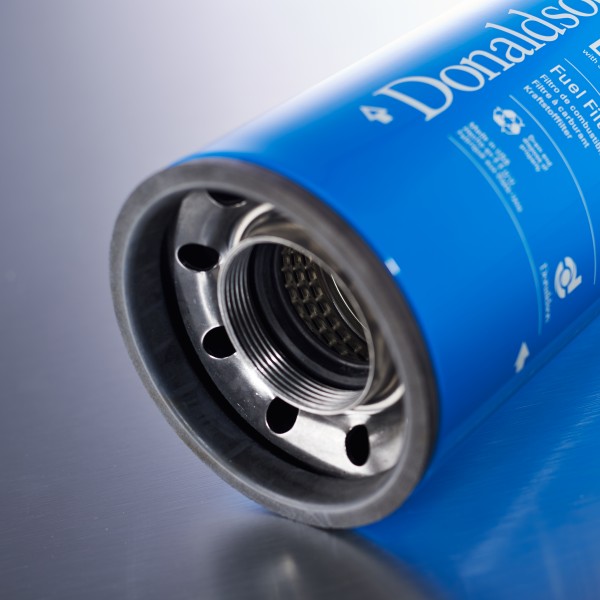
Filtration Focus
Filtration Focus provides valuable insights to help you pinpoint hidden issues and solve filtration challenges in your operation.
Overview
About this Series
Donaldson’s Filtration Focus series provides valuable insights to help understand and rectify the contamination issues challenging your operation. Subscribe now to stay informed.
Latest Focus
Videos
Compressed Air & Gas

Keeping Air Sterile in Air Compressor Environments
The removal of airborne microorganisms in air compressor environments is essential to successful food and beverage production. Sterile air is a key requirement and utilising correct filtration methods plays an important role in achieving this level of air quality. Learn More

Vent Filters Provide Economical Storage Solution
Vent filters can be a very economical and effective solution for stored food and beverage preservation. This method compensates for changes in product volumes, while also using a sterile filter to capture any contaminates. Vent filter technology can play a part in your food and beverage storage solutions. Learn More

Addressing Condensation in Compressed Air Systems
“How do I get condensation out of an air compressor?” is a common question from those experiencing the harmful effects of moisture in compressed air systems. Air drying technology can help reduce condensation by cleaning and drying the air before it enters the air compressor. Learn More

Optimizing Sequential Series Pre-Filtration
Over time, filters become plugged with contaminate and eventually start to underperform. Choosing the proper arrangement of sequential series filters for your process will optimize air flow, support long life of the final sterile filter, and lead to significant savings. Learn More

Maximize Filter Life with Advanced Technology
Heat stress can limit the number of sterilization cycles a filter can tolerate when steam is applied to sterilize in place. Learn about how filtration technology can help maximize filter life and substantially reduce your total cost of ownership. Learn More

Sanitary vs Sterile Filtration
Purity requirements in industrial production processes for air & gas, steam and liquid can range from sanitary to sterile. Understand the difference between both conditions and more about '3-A Sanitary Standards'. Learn More

Energy Savings with Compressed Air Filtration
It’s common to increase compressor system pressure when equipment is not getting the correct quantity or pressure of air. Many maintenance workers will even crack a valve at the bottom of a filter bowl to make sure condensate can drain out. While this might work, the costs through waste associated with this practice can be extreme. Learn more
Engine & Vehicle

Diesel Fuel Quality & Engine Filtration
Modern diesel equipment demands higher fuel cleanliness to meet precision-designed fuel system pumps and injectors. However, diesel fuel is more complex to keep clean due to water emulsions and organic contaminants. Fortunately, advancements in fuel filtration are improving diesel engine performance by meeting the growing fuel cleanliness requirements. Learn more

Minimizing Water in Air Intake Systems
Too much moisture entering an air intake system can cause damage to a vehicle’s crucial components. However, utilizing air intake accessories will help reduce the moisture from incoming air. This helps protect your air cleaner, prolonging filter life and engine durability while reducing maintenance costs. Learn more

The Role of Vacuator Valves in Air Filtration
The vacuator valve is essential to the pre-cleaning process of a 2-stage engine air cleaner. It helps facilitate the effective removal of contaminants, while also stopping dirty air from directly entering the air cleaner via the vacuator tube. Learn more about how the vacuator valve works and how it helps you avoid premature filter replacement and unplanned downtime. Learn more

Cold Start Performance
Understanding the difference between common lube filter designs and how they work can help you select high-quality lube filter elements providing the optimal balance of efficiency, capacity, and restriction. Learn more

Hydraulic Fluid Contamination
Hydraulic fluid contamination causes most hydraulic system failures, resulting in costly repairs and replacements. Learn how contamination-free fluids can improve system performance and extend component life. Learn more

Liquid Filtration Efficiency and Beta Ratings
It’s essential that both your filter efficiency and micron rating be matched to your application. Micron sizing is of little importance without some measure of the filter media’s efficiency on a given particle size. Learn more

Understanding Air Filter Efficiency
A small increase in filtration efficiency can make a big difference to the airborne contaminants reaching your heavy-duty diesel engine. Learn more
Industrial Dust, Fume & Mist

Managing Weld Fume Hazards
Hazardous fumes are present in all methods of welding and a number of health effects are associated with breathing in these fumes. Many controls, such as filtration and extraction equipment, play an important role in creating a risk management strategy against such hazards. Learn More

Understanding Differential Pressure in Dust Collector Systems
Differential pressure in dust collectors tells us a lot about airflow resistance within the system and the condition of its air filters. Monitoring changes in differential pressure can help operators maintain dust collector conditions while maximizing filter life and supporting energy savings. Learn More

Why Filter Dust Loading Matters
Dust loading can impact filter life, pulse cleaning and the overall cost of dust collection. Learn about surface loading and how it can help you avoid unscheduled downtime, additional maintenance costs and increased operating expenses. Learn More

Improve Baghouse Emissions with Pleated Bags
Pleated bags provide cost-effective solutions for most common baghouse dust collector challenges. Learn how the improved filter efficiency of Ultra-Web® Spunbond pleated bags can reduce emissions relative to conventional 16oz singed polyester felt media bags. Learn more

Considerations When Purchasing a Dust Collector
An effective industrial dust collection strategy goes further than simply installing a collector. Learn more

Combustible Dust Management
It’s essential to have a comprehensive plan to manage and mitigate potential combustible dust risk. A well-designed, maintained, and operated dust collection system is an integral part of your effort to comply with local standards and regulations. Learn more

Positioning Fan Dampers to Optimize Savings
Dust Collector performance can change over time as the differential pressure increases. Understanding your dust collector and the required adjustments can mean the difference between optimizing savings and lost production time and money. Learn more



